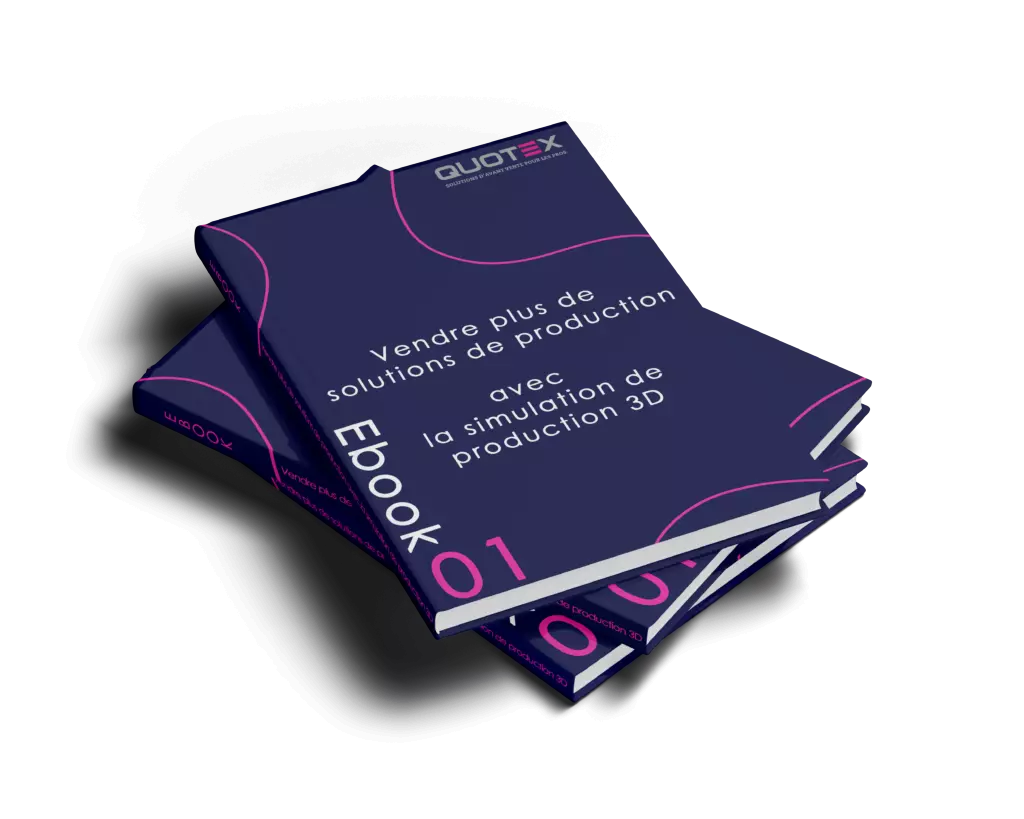How to use 3D visualization software to improve alignment and cohesion between manufacturers and system integrators? Such software improves collaboration by reducing the risk of errors or oversights.
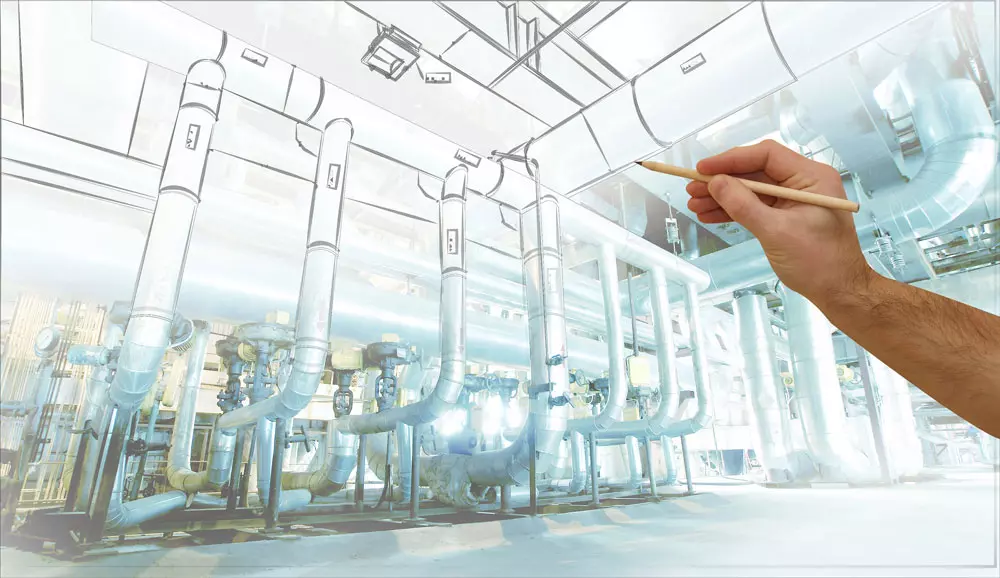
Cohesion between integrators and manufacturers: a necessity in the industry
Cohesion: a new industrial revolution
There is no doubt that the manufacturing industry is in the midst of a renaissance. Complemented by leaps and bounds of enabling technologies fundamentally disrupting the status quo, the new renaissance is forging seismic and dynamic shifts in space.
But there is another simultaneous revolution occurring within manufacturing beyond technology, and that is the maker mindset and, more specifically, the factory paradigm itself: the lens through which manufacturers plan, design and operate the shop floor .
This revolution is profound in its simplicity and can be summed up in one word: cohesion.
The challenges of cross-departmental collaboration and disparity in data and systems
According to a recent survey conducted by LNS Research, the top two operational challenges faced by manufacturing operations management survey respondents were a lack of collaboration across departments and disparate systems and data sources , respectively. (1)
This is particularly problematic for modern factories, which strive to be responsive and flexible to market needs, while maximizing productivity and profit.
To succeed in the 21st century, manufacturing planners need their factories to be integrated and cohesive with their supply chain, product development and other organizational assets.
This requires system integrators to become more sensitive to the impact of their solutions on this cohesion , and manufacturing planners to improve the way they communicate and collaborate with all stakeholders involved in the planning process.
Visualization: serving cohesion
Fortunately, there are tools to get “everyone on the same page ,” creating a catalytic effect on team communication and shortening implementation cycles. One of the most effective tools is visualization .
Visualization, commonly defined as “ the study of visual representations of abstract data to enhance human cognition ,” has been a part of manufacturing planning since the dawn of the last industrial revolution.
Visual aids such as drawings, plans, and photographs (and later CAD drawings and 3D renderings) are forms of visualization that manufacturing planners and systems integrators have used for decades to communicate design concepts of production.
3D visualization software has merged with simulation technology
In recent years, 3D visualization technology has merged with simulation technology and the Internet, evolving into 3D production simulation technology.
This technology integrates disparate sources of input data , such as CAD geometries and programming logic; and, using manufacturing-specific simulation behaviors, creates accurate simulations and visual representations of these inputs .
In a nutshell, it helps planning teams visualize their factory environment and the impact of their decisions on design and manufacturing performance, with engineering-grade accuracy .
This is important for two reasons: it reduces the risk of design errors and oversights, and allows more stakeholders to participate in the planning process .
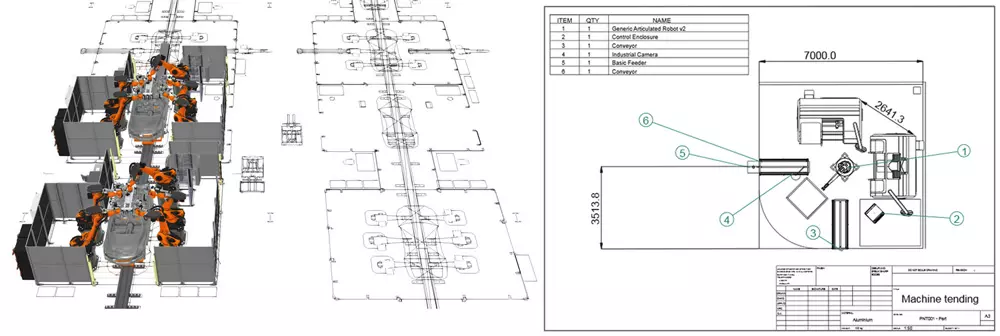
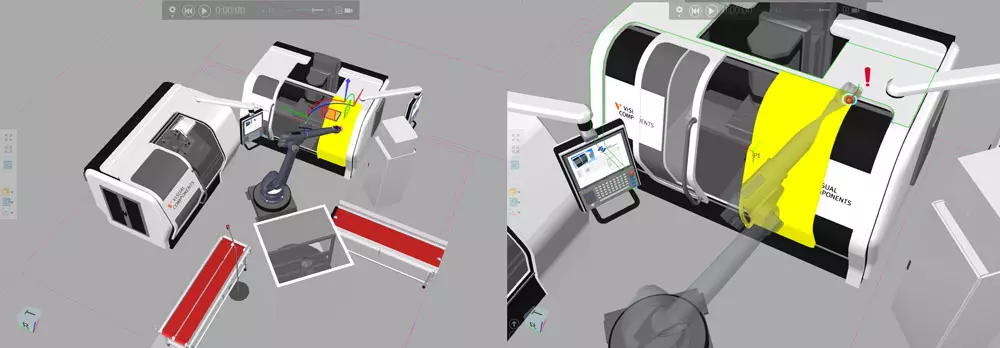
3D visualization software helps avoid costly oversights for the company
Consider the following scenario (taken from a real-world experience) in which an integrator's customer factory missed delivery of goods and lost more than $1 million on a project due to a slight error in calculation (omission, in fact) in an Excel planning file .
This miscalculation , when properly accounted for and scaled across production, resulted in a significant reduction in throughput .
So one item in the planning toolbox (in this case, an ordinary spreadsheet) has messed up in its inability to accurately account for a spatial nuance that, while almost impossible to capture in Excel, has would have been obvious to the planners if they had been using a 3D production simulation tool .
What does that mean ? In short, this means that system integrators and production planners who use comprehensive visualization in their planning process reduce the risk of making errors and oversights that can have significant downstream effects.
When system integrators and planners rely on a combination of disjointed tools only at certain stages of the process, important information and key details can easily be missed or omitted , such as spatial irregularities between different robots and stations, or caveats and nuances in the processes.
3D visualization and production simulation software integrates disparate data sources and helps planning teams visualize the impacts of their design decisions , so they detect errors and oversights before they become hazards operational.
3D visualization software helps avoid costly oversights for the company
Perhaps the greatest benefit of visualization is how it improves collaboration and communication throughout the planning process .
The manufacturing planning process for 21st century manufacturers has become much more complex. It involves a wide range of stakeholders , from the sales team and implementation planners on the integrator side to the controls engineers and financial analysts on the manufacturer's side – all with varying degrees of knowledge and entry into the process.
3D visualization software is a valuable tool for these stakeholder groups to quickly understand all the moving parts and visualize the impact of their decisions on design and manufacturing performance . This information improves collaboration and allows everyone from the finance team to production engineers to participate more effectively in the process.
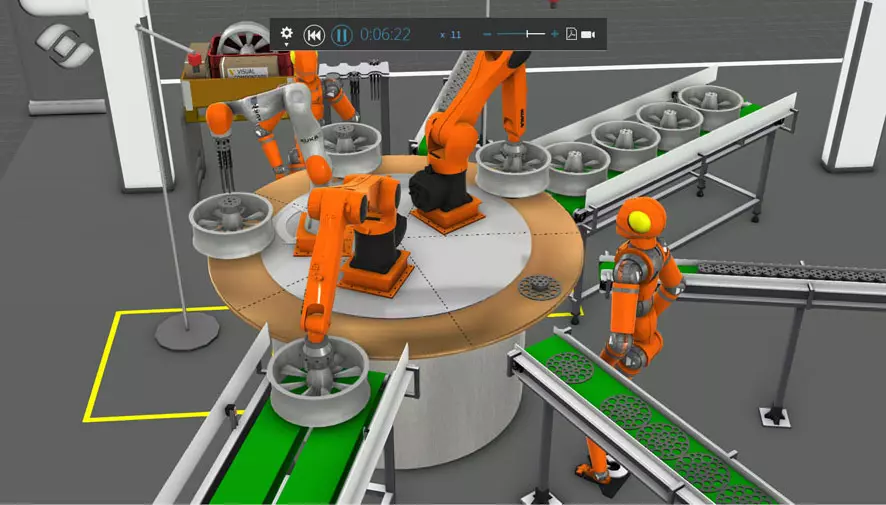
In the race for cohesion as an integral theme of Industry 4.0 and the so-called digital thread – technologies that enable a single, bidirectional flow of digitized information throughout the value chain – a Full 3D visualization is essential for system integrators and manufacturing planners to get ahead .
Limit errors and improve communication on your industrial projects with Visual Components
The Visual Components 3D simulation software allows you to make a complete 3D visualization of your projects and to simulate the operation of the production line, calculate cycle times as well as program industrial robots. Simple and quick to use, it is an ideal solution for system integrators and manufacturers.
Would you like to discover our solution? Contact us to benefit from a personalized, no-obligation demonstration.
(1). LNS search. “Manufacturing Operations Management Survey…” Np, 2013. Web. October 20, 2016.
